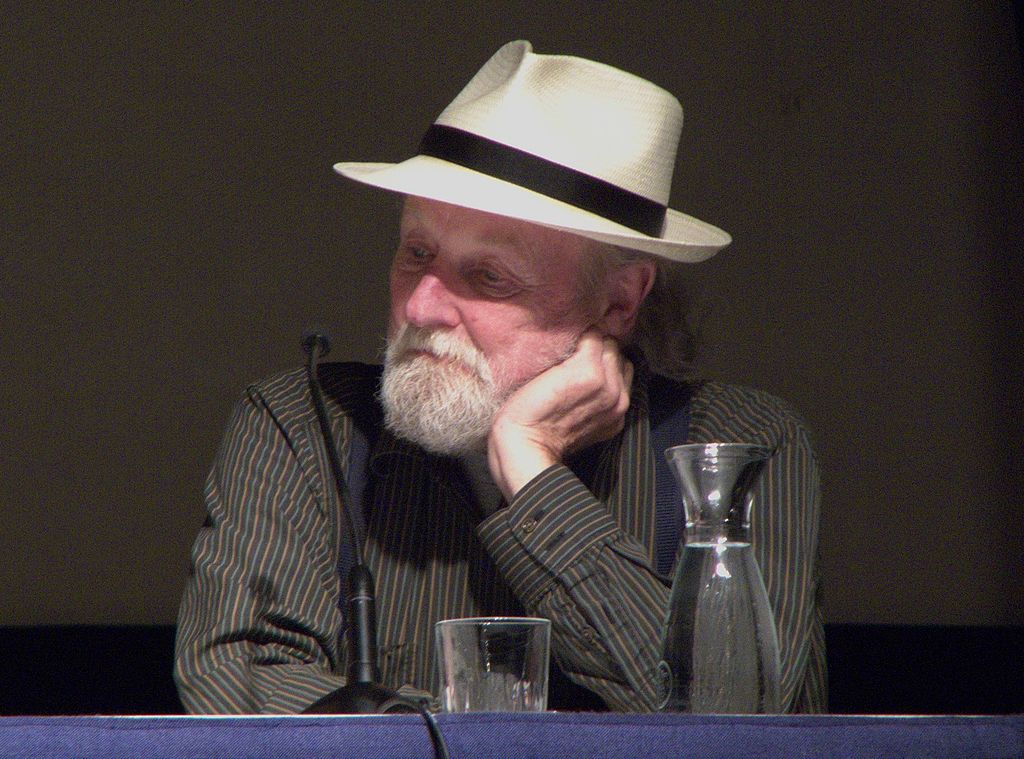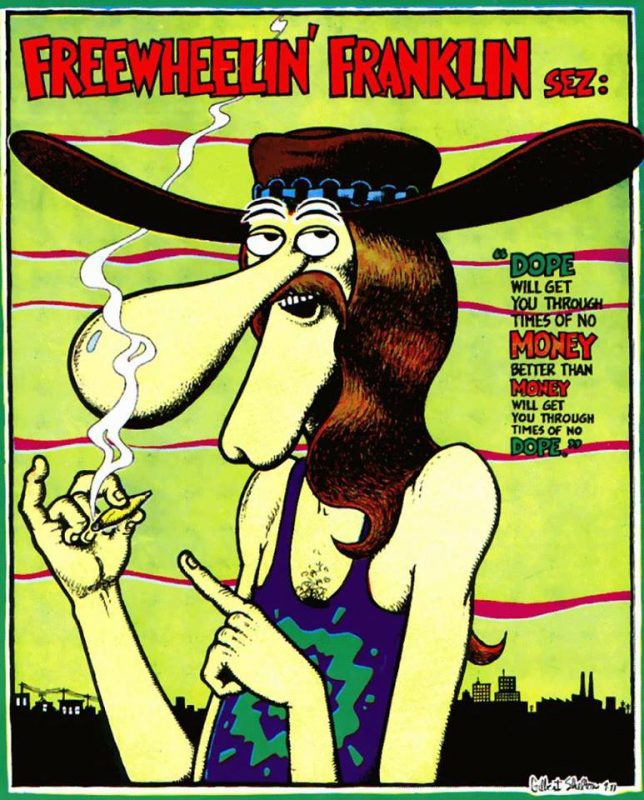Once upon a time, many decades ago during a mythical time known as “The 60s” America’s counterculture conceived a new art and literary genre known as “underground comix.”
Before animojis, emojis, and even GIFs, these hand-drawn (and often self-published) comic strips by artists such as Robert Crumb, Manuel “Spain” Rodriquez and Gilbert Shelton communicated satirical, subversive, raunchy, funny and insightful takes on the state of American society.
Perhaps because it was quite illegal then, cannabis was a dominant theme in many of the day’s comix, and their exotic, rebellious approach to reefer reeled in a new audience of young people craving both laughs and a different line than the mainstream media was feeding them.
Texas native Gilbert Shelton was among the artists who found marijuana to be a critical and illuminating plot device. One of his best-known works, the “Fabulous Furry Freak Brothers”, featured three stoners – Freewheelin’ Franklin, Phineas and Fat Freddy – who are constantly on the lookout for opportunities to buy and consume cannabis.
First published in 1968 in an underground Austin newspaper dubbed “The Rag,” The Freak Brothers introduced a catchphrase that still reverberates in today’s cannabis culture:
“Dope will get you through times of no money better than money will get you through times of no dope.”
“That slogan tells you more about money than about marijuana,” Shelton told The Cannabist in an email interview.
Shelton remembers the fear and paranoia that accompanied smoking marijuana back in the early 1960s in Austin. “We would do it in the bathroom and put a towel under the door so the smoke wouldn’t drift out and alert the cops at the police station, four miles away,” he said.
Now 77 years old, Shelton has been living in Paris for decades and has the Art Kerblooey Gallery there.

“Comic books are considered more respectable in Europe, and they are even called ‘the ninth art,'” he noted. “When old friends… ask me what I am doing nowadays, I say, ‘Er, uh… I’m in the publishing business.'”
The genre Shelton pioneered realized its heyday between the clean-cut comic books of the 1950s and the later graphic novel genres available today. Not everyone was a fan: Critics called them out for their occasionally dark, misogynistic themes. They were also denounced in some conservative circles as a threat to American values. Several sellers of comix also found themselves prosecuted on obscenity charges.
But Shelton’s comix were also quite liberating for many readers.
“New possibilities were still in the air, courtesy of a countercultural milieu that seemed to have embraced the upsurge of comix,” author Jay Kinney wrote several years ago in his online essay, “The Rise and Fall of Underground Comix in San Francisco and Beyond.”
Shelton (who also did the cover artwork for the Grateful Dead’s Shakedown Street album) still keeps up on cannabis culture from Paris and reports he is following legalization efforts stateside.
“It’s about time!” he wrote. “I predict that even conservative states, such as Texas, will legalize it when they realize how much money it brings in.”
So has the legendary comix artist had a chance to sample the new, quite potent strains of cannabis now available? In short: yes, but…
“Today’s designer dope” is quite strong, he said. “But the cheap Mexican stuff we had in the 60’s got me as stoned as I wanted to be.”
Reflecting on the modern marijuana strains now available, Shelton recounted a story about how he and fellow American artist Paul Mavrides (a collaborator on the Freak Brothers who is also known for his satirical Church of the SubGenius series) were invited to be judges at a High Times contest several years ago, in Amsterdam.
“They gave us each thirty samples to smoke, in a period of five days,” he said. “This meant one sample every two hours or so. After the first sample I was so stoned that I couldn’t judge the others, so I gave them all the same score. Mavrides however, a prodigious smoker, conscientiously evaluated all thirty samples and wrote a lengthy critique of each.”
The Cannabist asked Shelton if he thought that, despite legal marijuana’s evolution into a big business, there might still be a place for people who see cannabis as a mission to help to change society for the better.
“The mission as I see it is to get the government out of our private lives,” he responded.
“If marijuana does improve society, it would be because it neutralizes somewhat the hatred so prevalent nowadays between people of opposing political views,” he said. “The questions raised by the counterculture in the 1960s remain mostly unanswered today.”

(via FreakBros Facebook page)
